Process 037 ☼ How To Bulk Roll Film (And Save Money)
Giveaway: 4 rolls of Vision3 250D 35mm film courtesy of Tim Verheijen
Dear friends,
In today’s letter Tim Verheijen shows us how to bulk-roll 35mm film.
For this week’s giveaway we have 4 rolls of Vision3 250D film in 35mm format. This is a special cinema film not usually available as still film, so get excited.
What Is Bulk Rolling?
Most of us buy film from our favorite shop a few rolls at a time, but there is another less common way to buy film that feels like a cheat code: bulk rolling your own film!
Before your favorite film producer rolls 36 exposures into a film canister for you to buy, that film is produced in huge rolls of hundreds of meters of film. Certain film stocks are then cut down into tins of 30 and 120 meters for customers who want to bulk roll their film for one of the following reasons:
To Save Money — Buying film in bulk is cheaper than buying it per roll.
To Get Unique Film — Some film isn’t available in roll format, like film made for motion pictures, including that gorgeous Double X I wrote about in issue 032.
To Have More Control — If you bulk roll you can choose to put only 12 or 24 exposures on a roll to test something without using up a full roll.
How To Bulk Roll Film In 7 Easy Steps
My pal and fellow Amsterdam Analog Club member Tim Verheijen was kind enough to sit down and show us exactly how bulk rolling works in seven easy steps.
Step 1 — Buy A Tin of Film + A Bulk Loader + Empty Film Canisters
I got my hands on tin of delicious Fomapan Retropan 320 Soft to use as our example. This tin contains 30 meters of film which translates into about 18 rolls of film. It cost around $50 which means each roll costs only $2.77!
The bulk loader can be bought for around $80 at various shops, including my pals at Retro Camera, and the changing bag in the next step costs around $30.
Step 2 — Transfer Film to Bulk Loader in a Changing Bag
A changing bag protects the film from any light while you transfer it to the bulk loader. If you don’t have a bag, you can do this step in a pitch black dark room.
When you remove the bulk loader from the bag a tiny bit of film will stick out.
Step 3 — Cut A Film Leader
Here we cut off a piece of the film to create what is called a film leader, which you need to be able to attach it to the spindle in the next step.
Step 4 — Tape the Leader to the Spindle and Close the Canister.
The spindle is the spool inside of the canister that the film will be wrapped around. Once the film is taped to the spindle you slide the canister onto it….
…and close the canister and the bulk loader, leaving the canister inside the loader.
Trigger warning: Limp Bizkit reference coming up.
Step 5 — Keep Rollin' Rollin' Rollin' Rollin' (What?)
I fully understand if you have to unsubscribe from Process because of that sudden rap-rock ambush in the middle of a decidedly un-rap-rocky topic, but I do have a one more step to get through here so please hang on. In this step you wind the crank, that’s all!
Step 6 — Open The Loader, Remove Now Loaded Roll
You’ve cranked that winder until it says you hit 35 frames. Then you go a little bit longer until you think should be at 36. You’re wondering why they don’t just make the dial go to 36? Nothing about analog photography makes any sense, bucko. Accept it.
Proceed to artistically cut a chunk out of the film to create a lovely leader which makes it easier to load the film into your camera.
You’re done! You’ve now bulk-rolled your very own roll of film. Now do it 17 more times to finish the 30 meters and you’ll be good to go for a few weeks or months.
You’re into time lapses? Good because we also made on of those of the entire process.
Notice Book Update
This week was the most exciting week in NOTICE land yet! I got to finally see (and hold!) the finished book! After the global paper shortage and the thousands of little decisions and the preorder campaign this was an incredible moment for me.
In this video by fellow ACA pal Luc Satter we document how veteran book maker Rika attached the cover image to each individual linen hardcover by hand for the entire first print run (and the second printing! Yes we went into our second printing!)
Also in this video, a time-lapse of my epic book-signing sit down. As promised, I signed every pre-ordered copy of NOTICE and since I was on a roll I decided to also sign the remaining copies of the first printing. Order yours now before they’re gone!
How long did it take me to sign 1,000 books? It took me 9 (incredible!) Sopranos episodes. I feel so grateful to have the opportunity to sign and hold each copy before it gets shipped to you. Speaking of shipping, we hope to get the limited edition zine in next week and then everything gets sent out. So soon!
Alright that’s it for this week!
Keep shooting and take good care of yourselves and others.
Wesley
Process Giveaway!
Tim Verheijen has made available four rolls of Vision3 250D film in 35mm format. This is the legendary Kodak cinema daylight balanced color negative film that was used to shoot many a classic movie including Dunkirk, Inception, Once Upon a Time in Hollywood, La La Land and so many more.
This film is only available from Kodak as 16mm cinema film, but thanks to Tim we have the opportunity to shoot it at 35mm film.
An important note about developing this film. If you home develop, make sure to use ECN-2 chemicals (not C41). If you go to a lab, make sure they are set up for ECN-2 and if your lab isn’t check out this list of labs that are.
To enter email me at hello@wesley.co (please don’t reply to this note but send a separate email) before 11pm EST on August 10th and answer the following question:
Which other photography mailing list, or YouTube channel, or other avenue currently inspires you most? Specifically ones that share process or have an educational or inspirational angle.
The winner will be randomly drawn and notified. This giveaway is for Process subscribers only. Subscribe by clicking the button below:
Make sure to show Tim some love on IG and check out out his film web store where he sells various bulk-rolled film stocks for very cheap prices.
If you enjoyed this issue of Process it would mean a lot if you shared it with your friends. Click below and tell your friends about it.
If you’re a new reader, browse the Process archives here.
Process is a weekly letter from Wesley Verhoeve. If you’d like to support what I do here click the button below to order my new book NOTICE.
Follow along at @wesley.

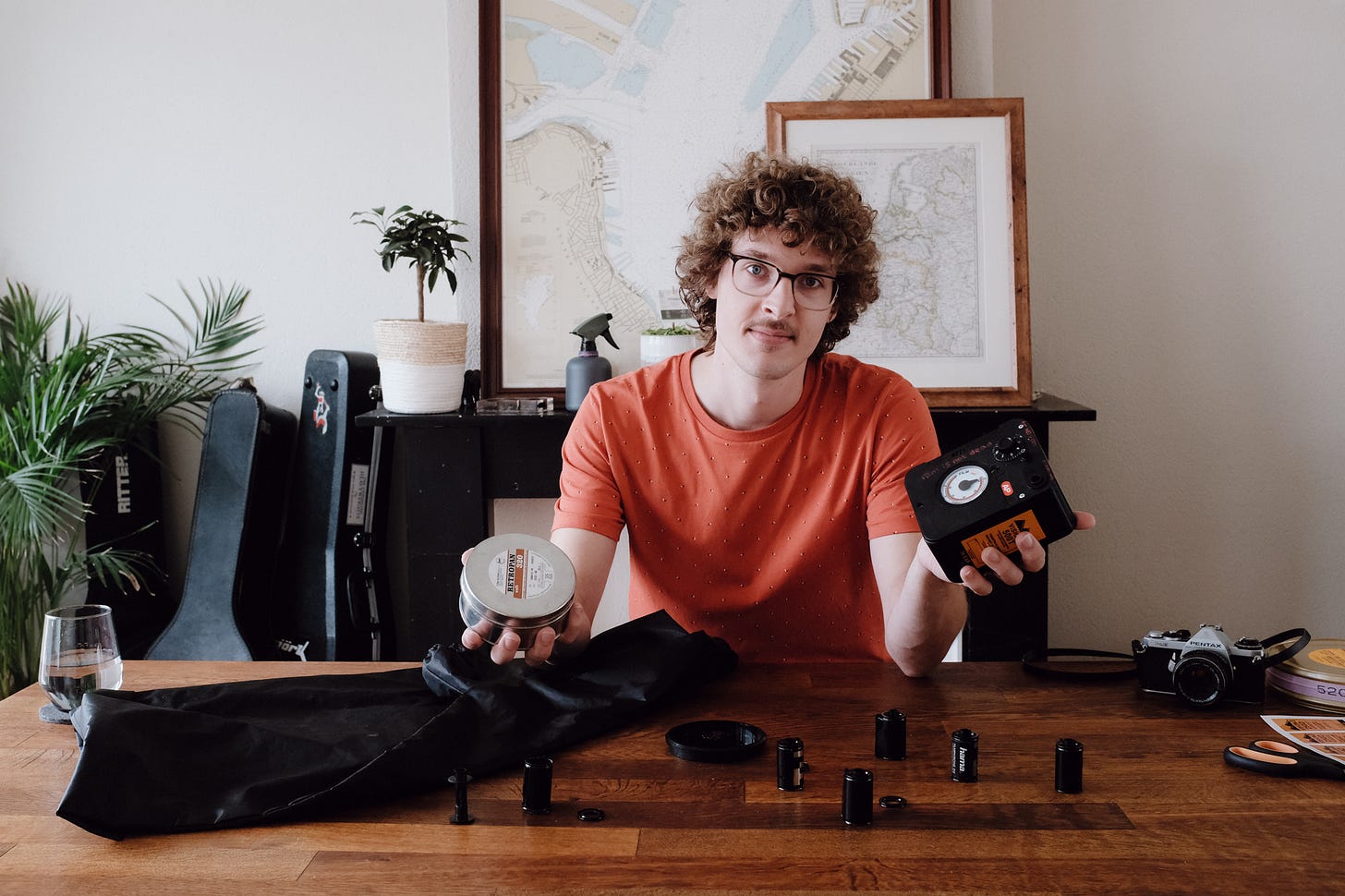
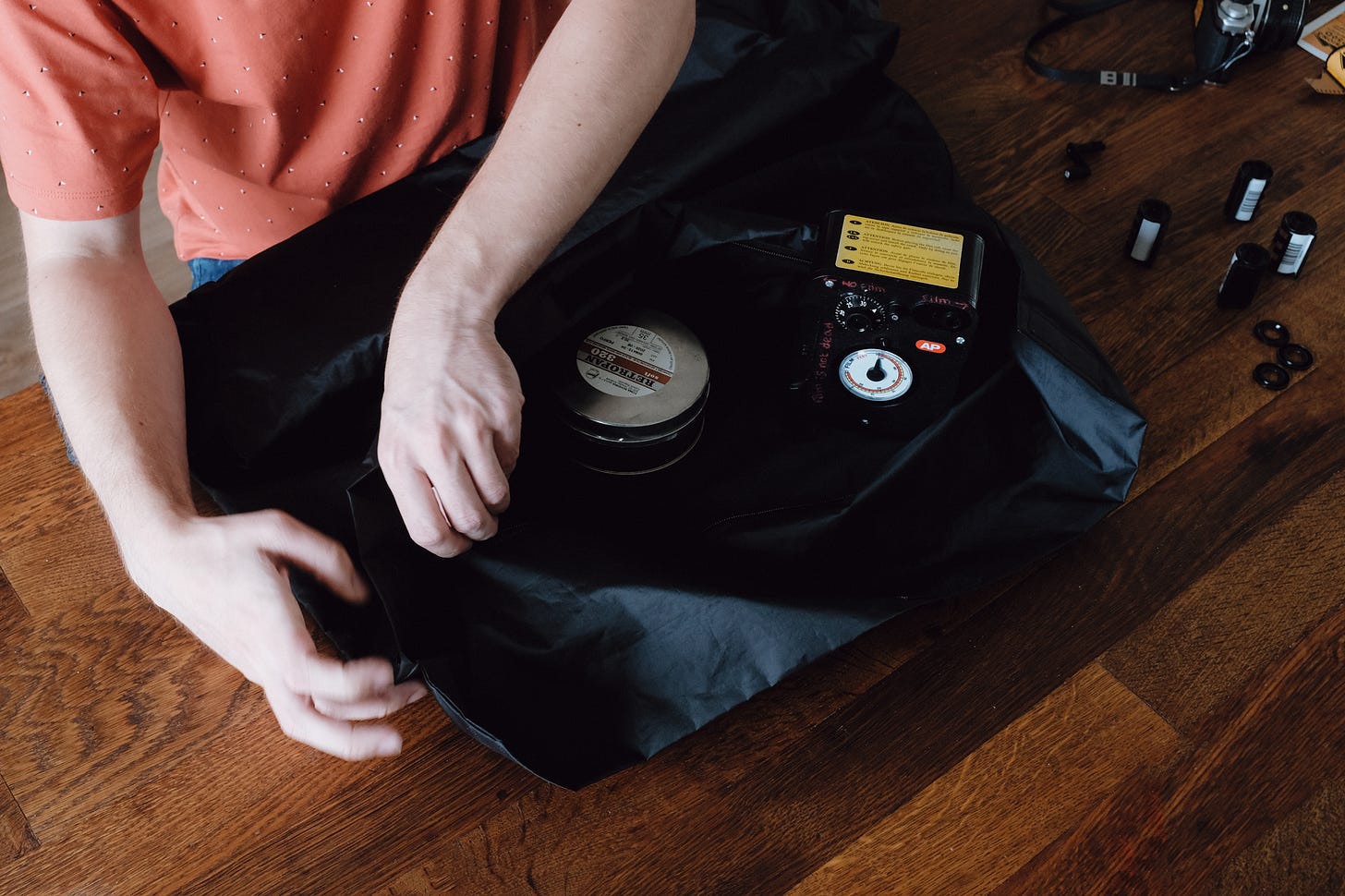
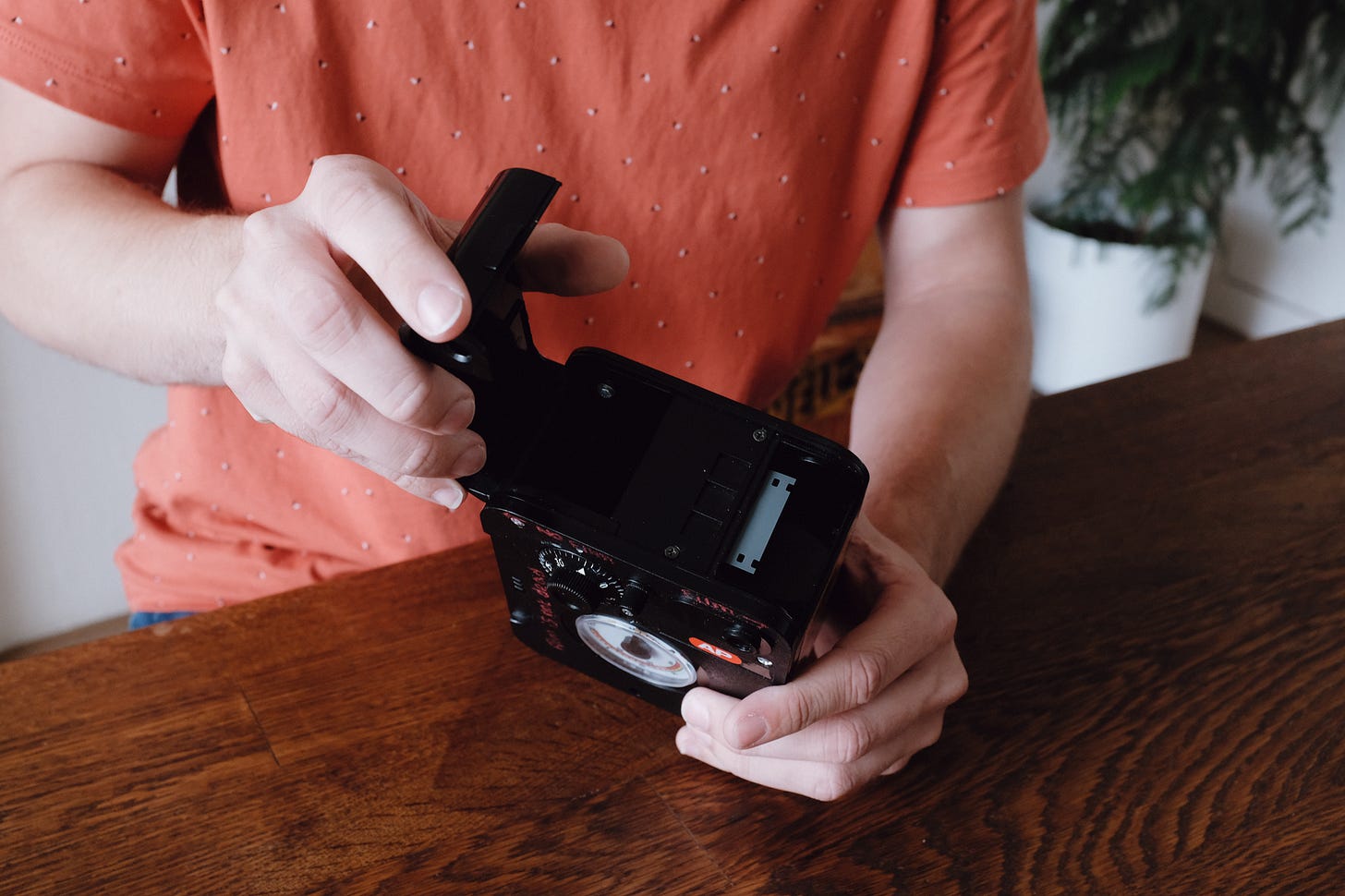
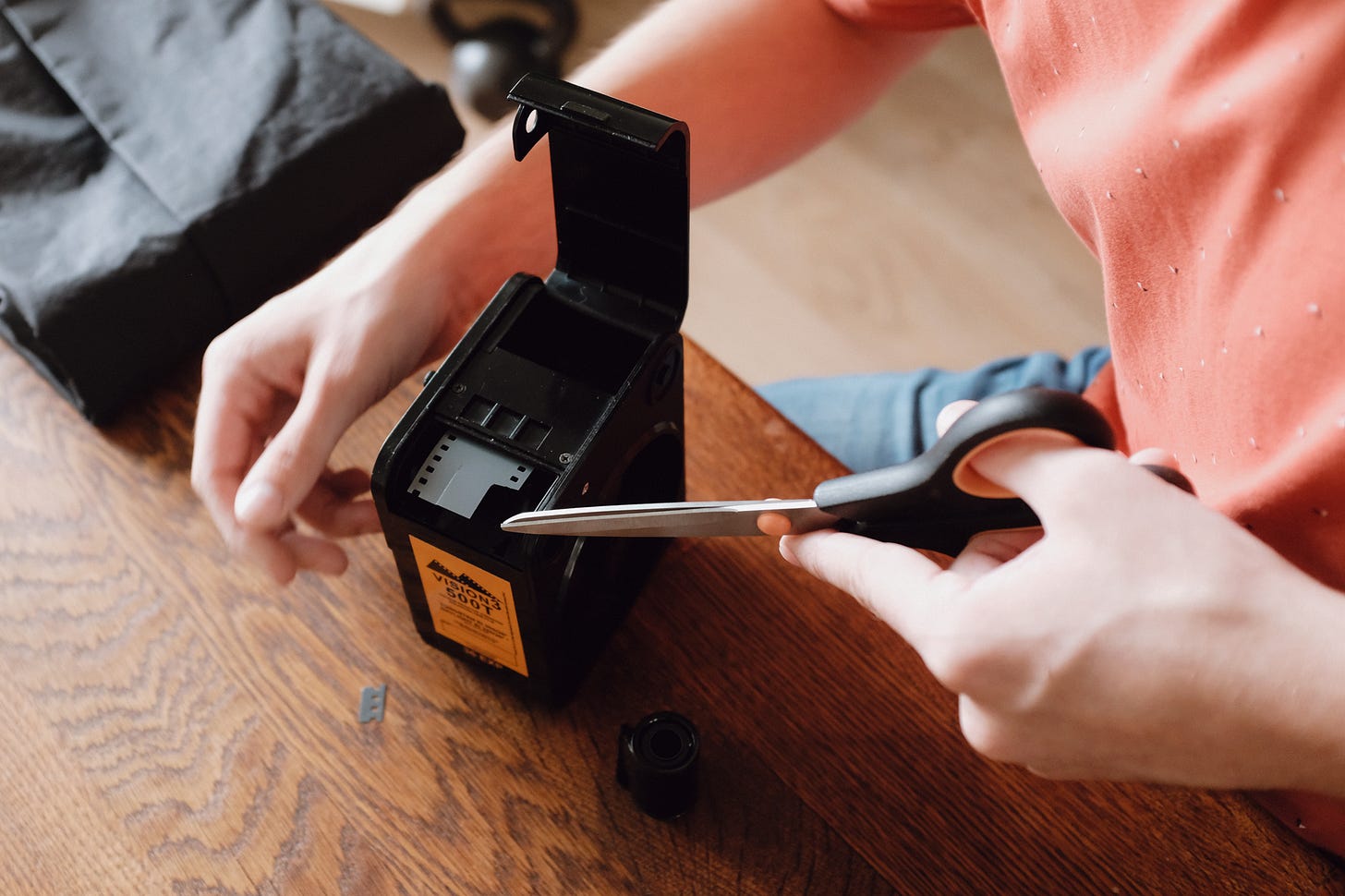
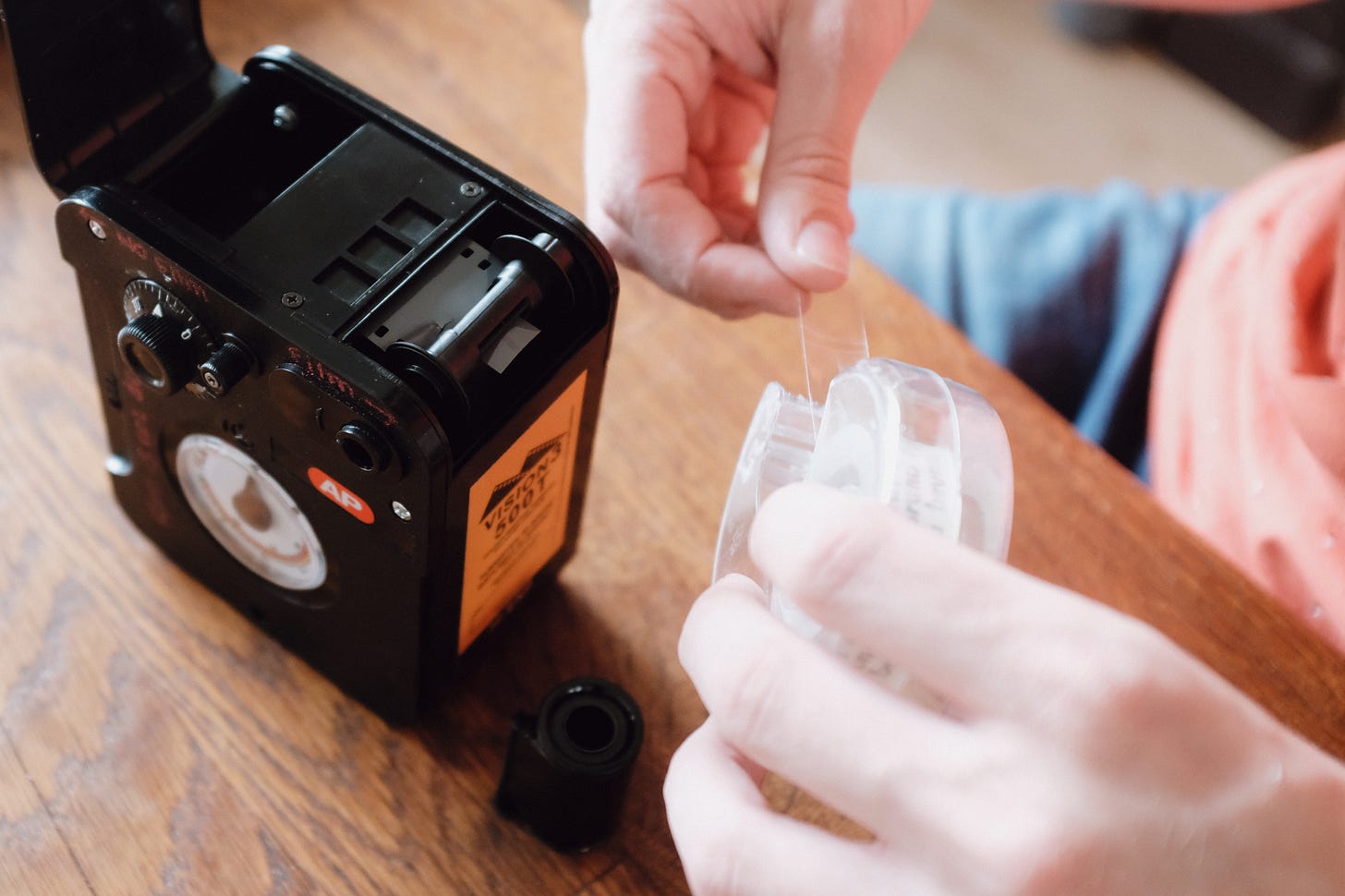
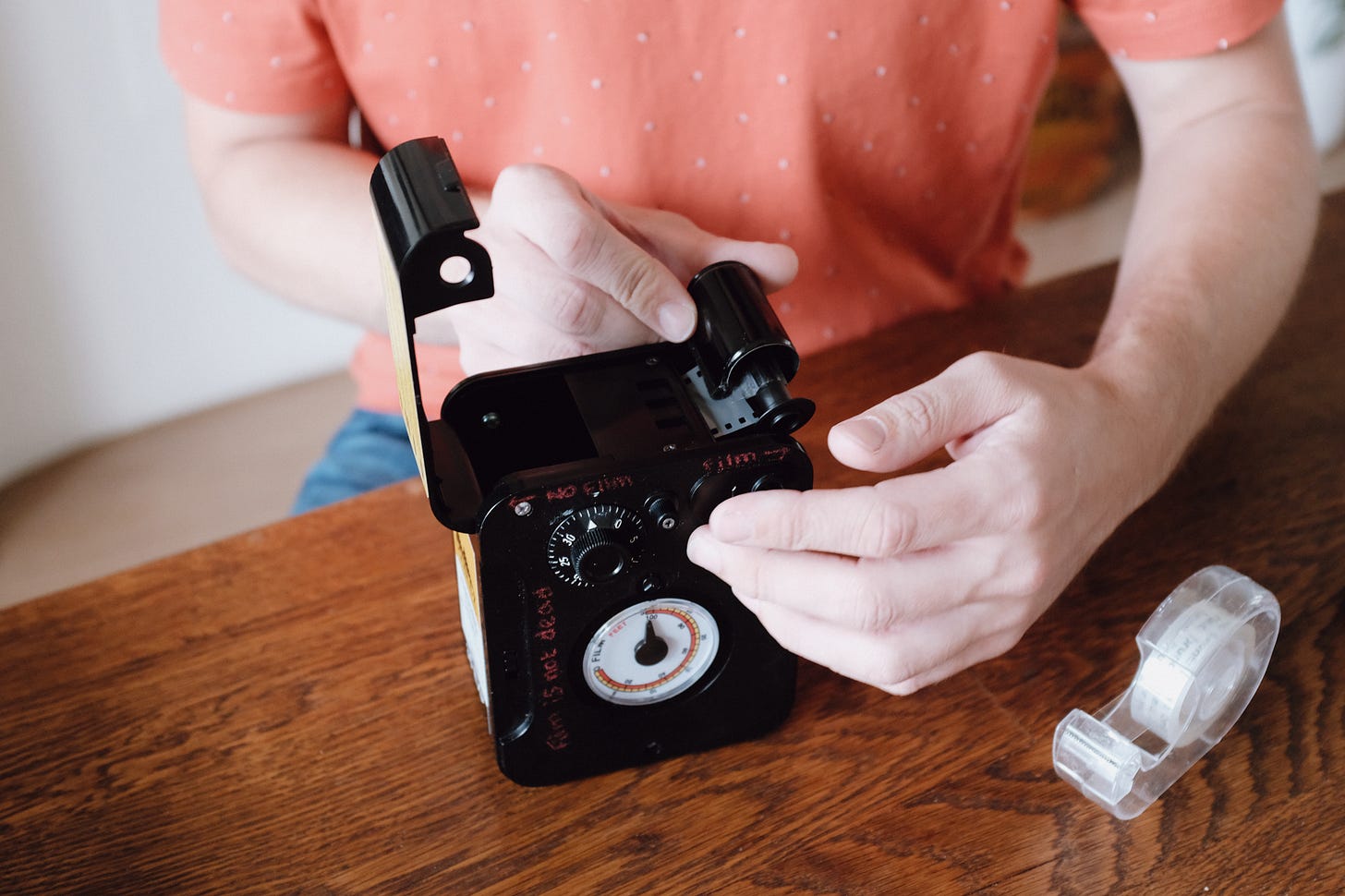

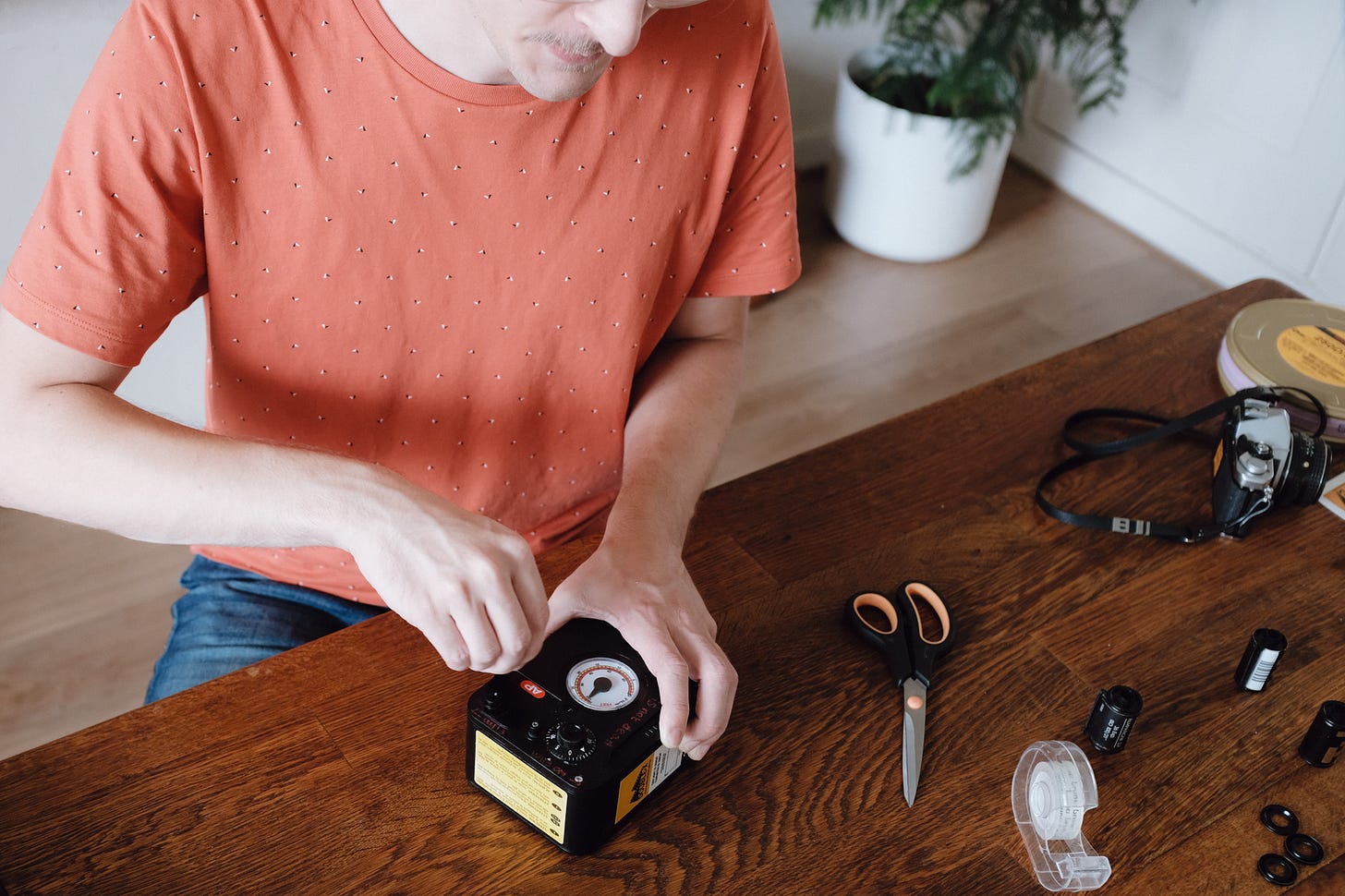
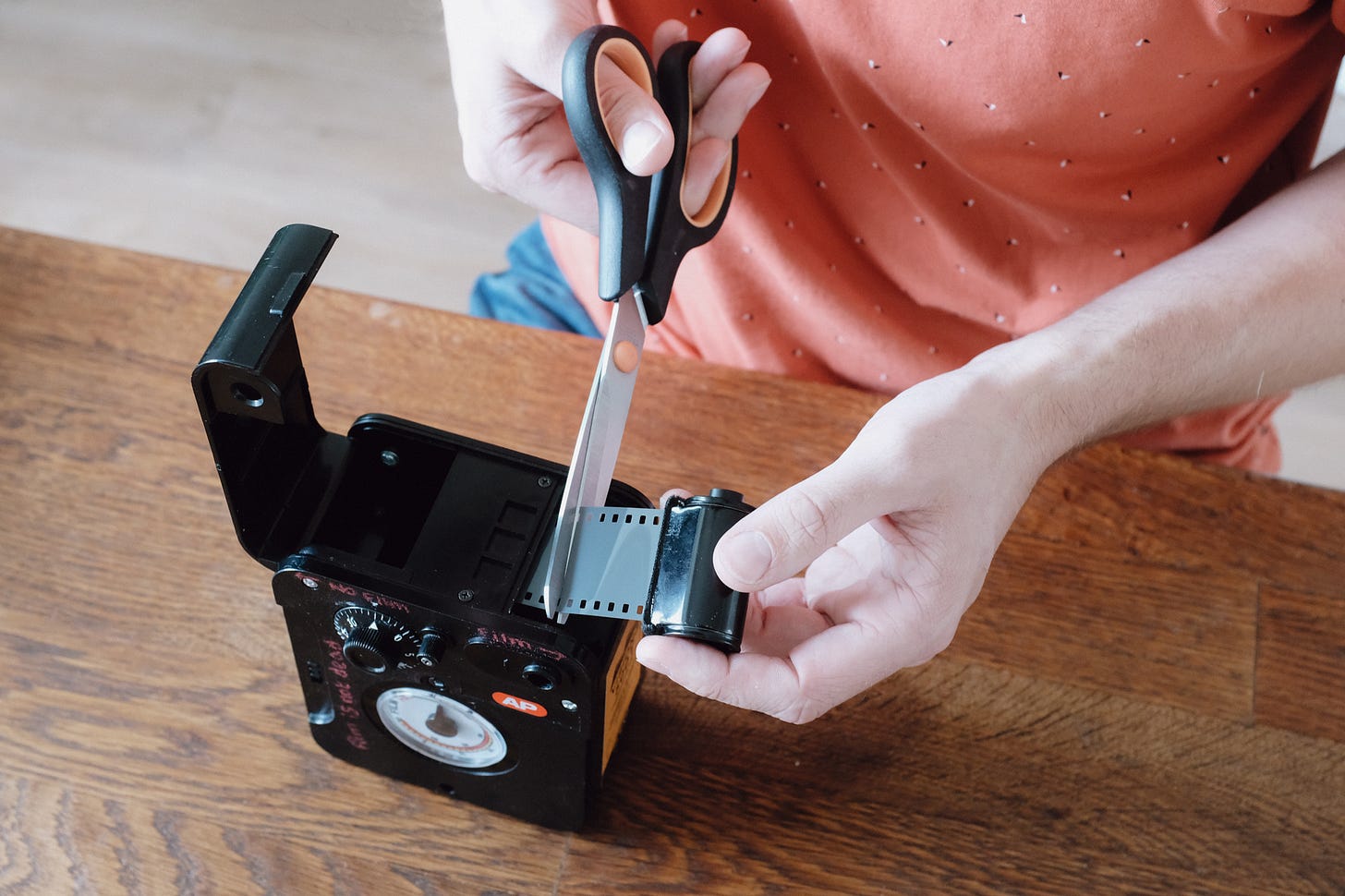
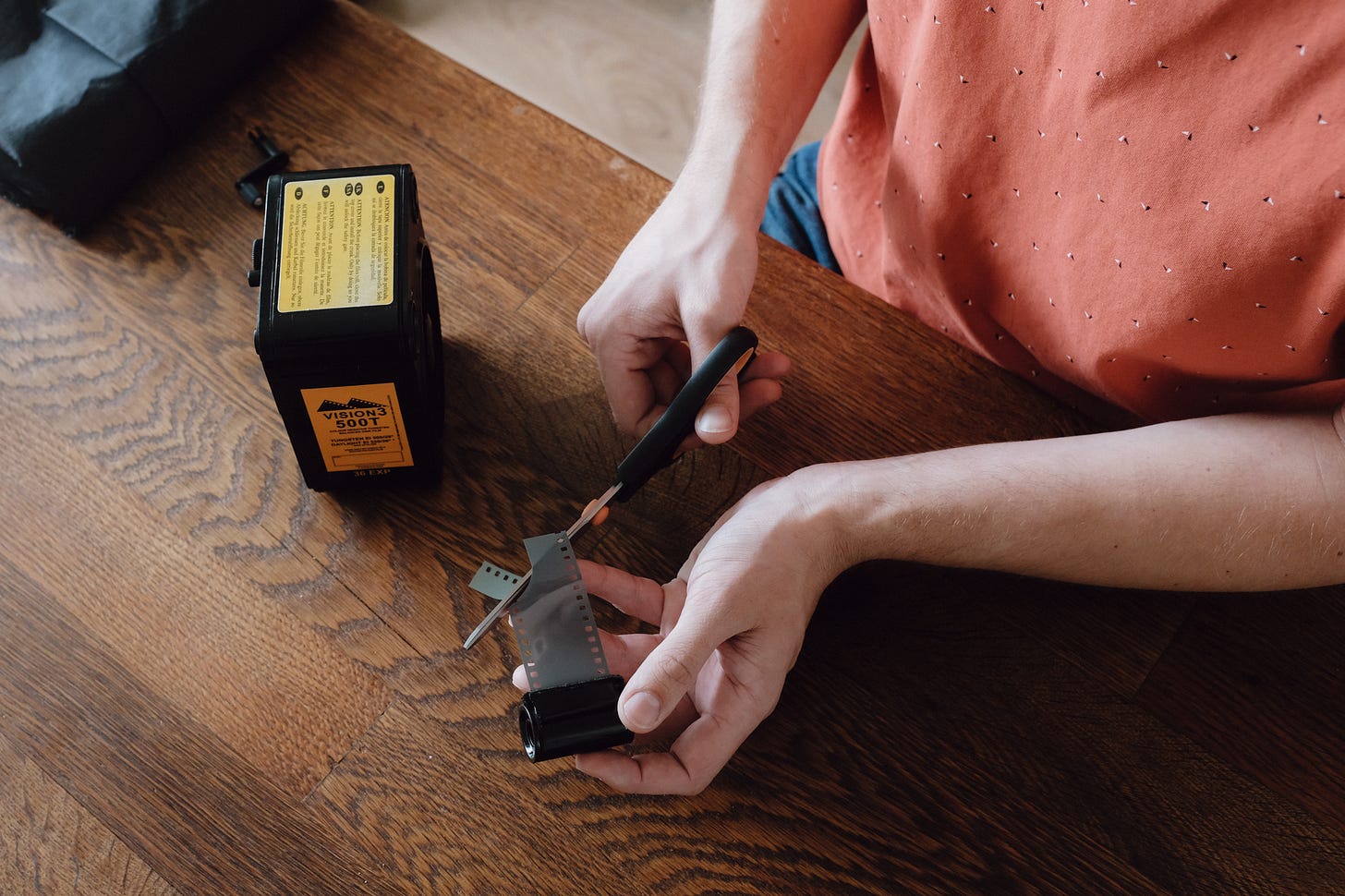
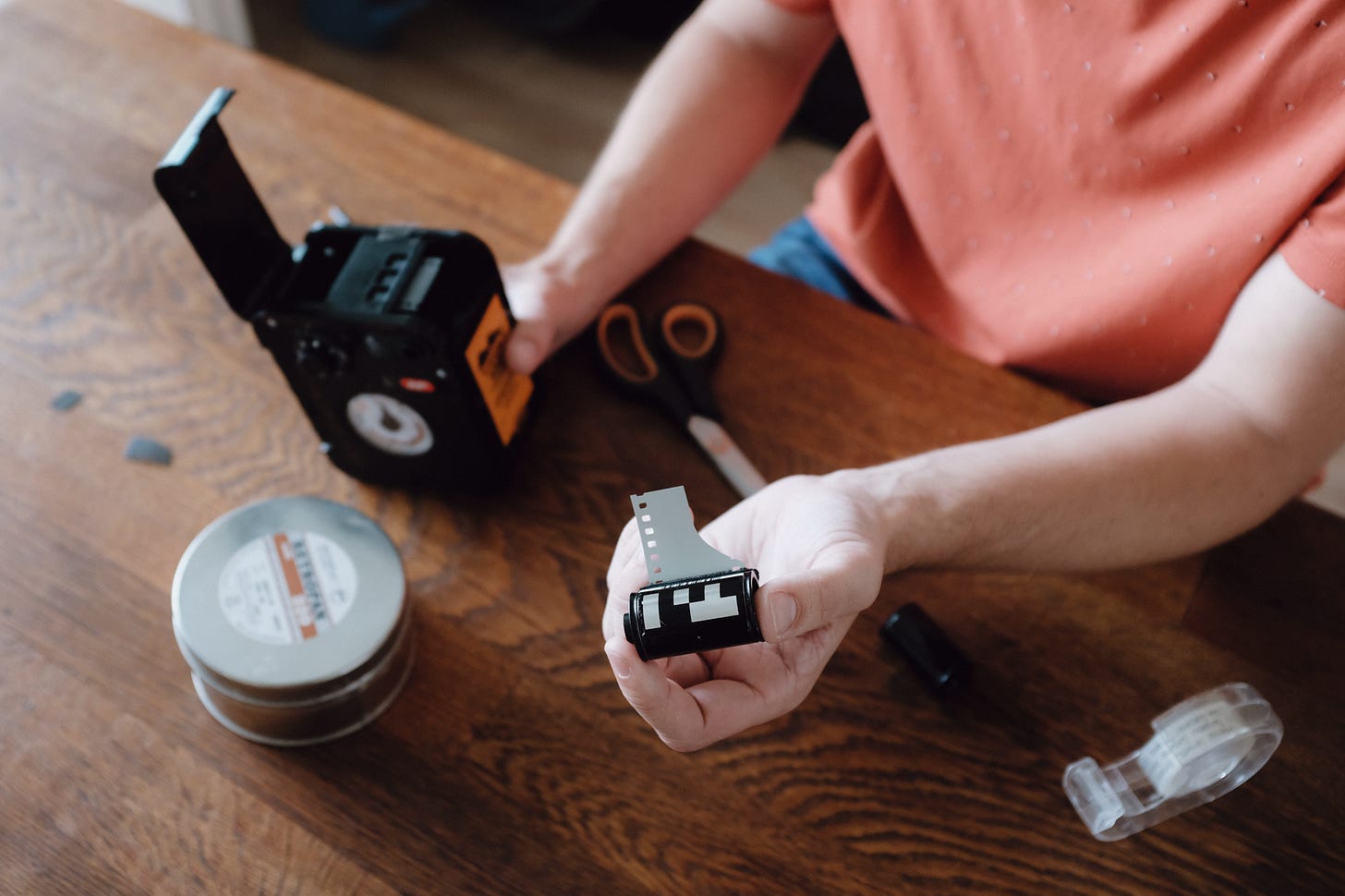
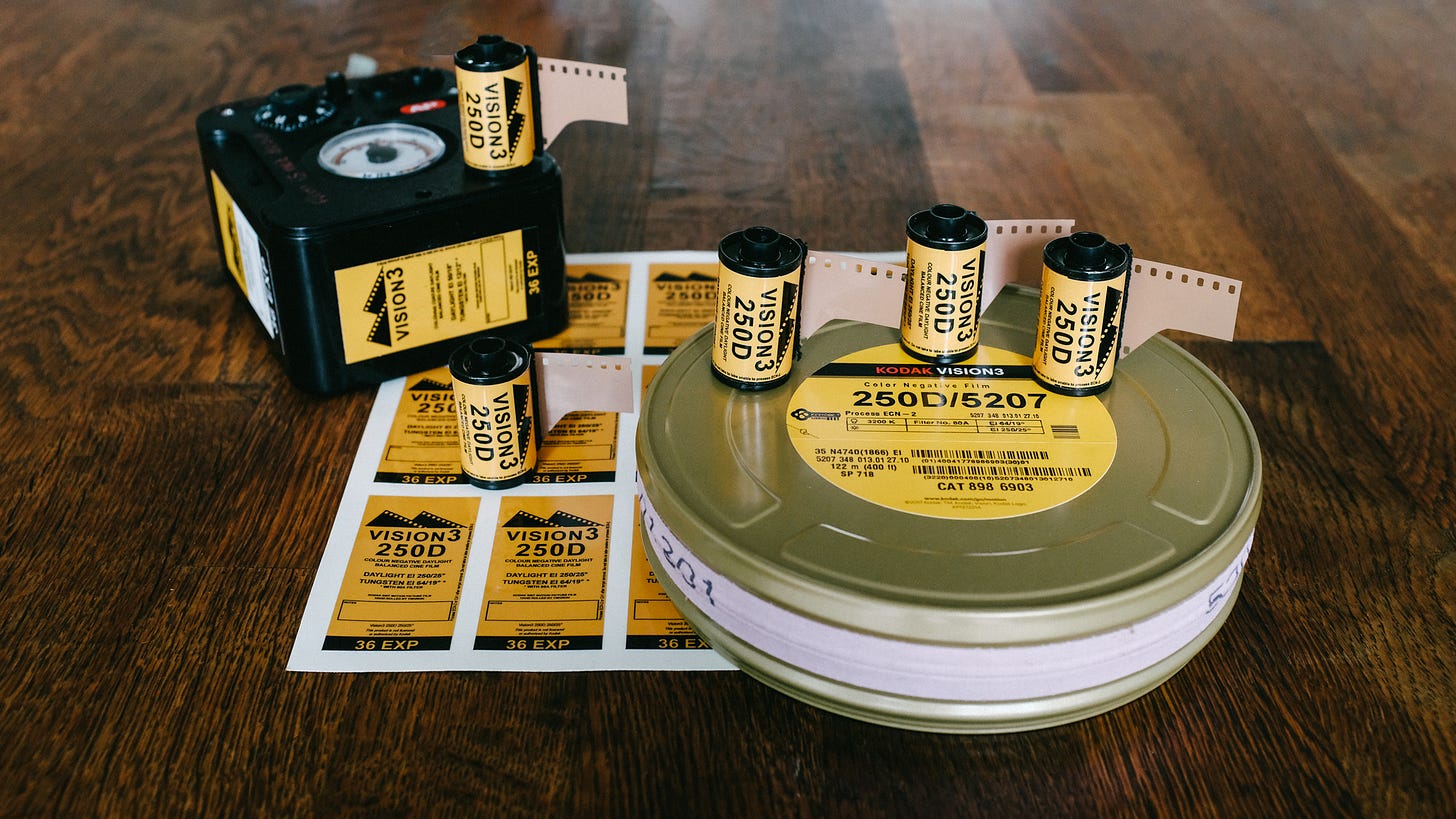
Hey Wesley! Just wanted to let you know I have recently started analog photography, and from these newsletters I learn more and more. Im always super stoked to see your updates :) From a fellow California High Schooler
Thanks
Jill
Jill
As an old ex professional photographer form the 70s and 80s who used to bulk load all his 35mm film kudos to you for passing on the craft.
I do, however, question the need for analog photography when digital goes far beyond he capabilities of analog and can emulate any analog lok and feel.
Maybe you can devote a post to telling us more about why you choose to shoot analog if you have not done so yet?
Thanks
Ian